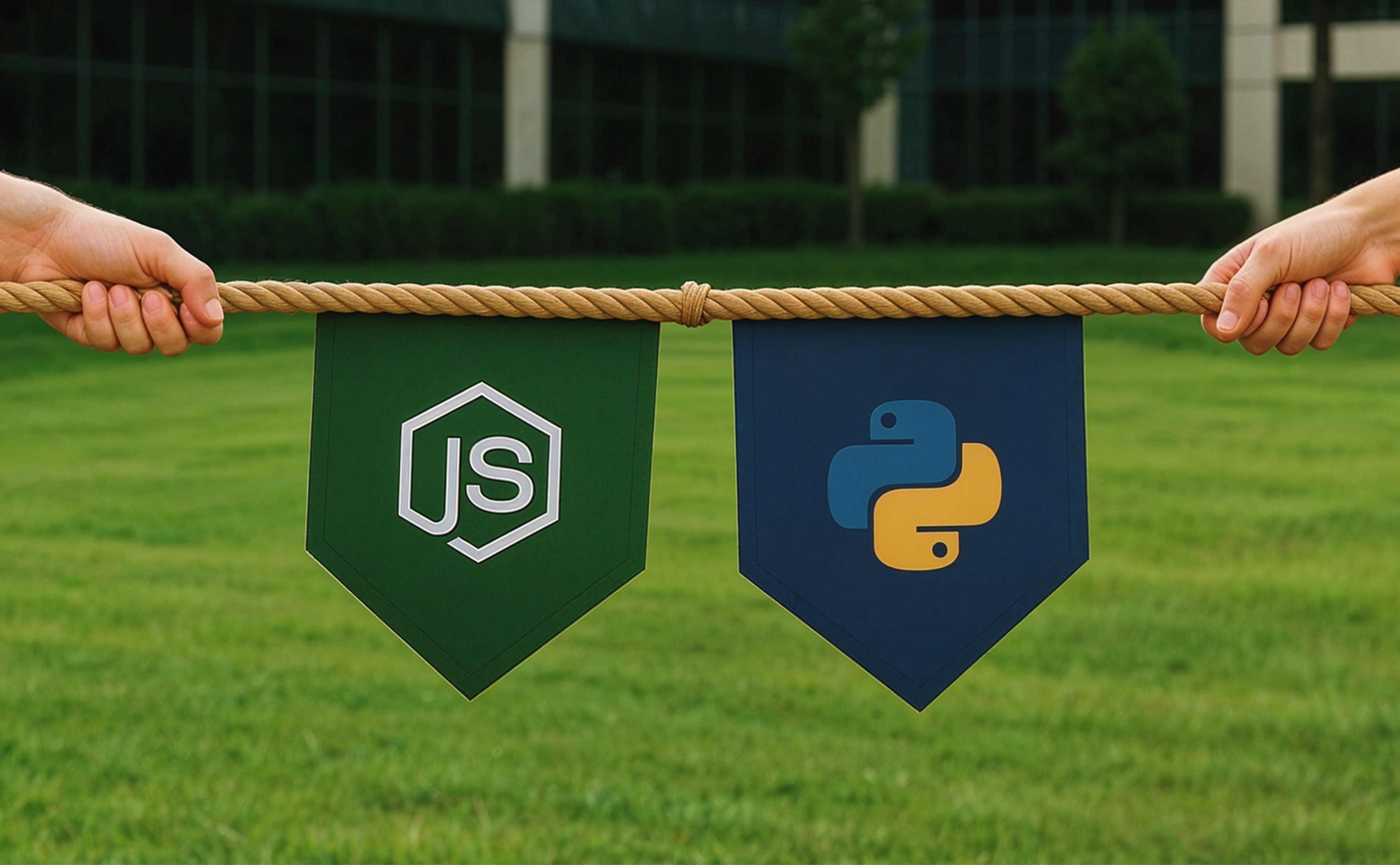What is the Difference Between Sales and Marketing?

Imagine walking into a store, drawn by an eye-catching window display. The ambience is perfect, and the layout is inviting. You're impressed, but not quite ready to buy. Then, a friendly salesperson approaches listens to your needs and guides you to the perfect product. You leave with a purchase and a smile.
In this simple scenario, you've just experienced the dance between marketing and selling. But can you pinpoint where one ended and the other began?
The difference between marketing and selling is subtle yet profound, much like the distinction between attraction and persuasion. Both are essential, yet they serve different purposes in the grand orchestra of business success. Understanding this difference isn't just beneficial—it's crucial. Whether you're a seasoned entrepreneur, a budding business owner, or simply curious about the mechanics of commerce, grasping the nuances between marketing and selling can be the way to unprecedented growth.
But what exactly sets these two concepts apart? How do they work together to drive business success? And in an era of digital transformation and changing consumer behaviours, how are these disciplines evolving?
In simpler terms, the difference between selling and marketing relies on their end goals: selling involves transforming goods or services into money, while marketing dives deeper into building lasting customer relationships and improving brand awareness.
Wish to dive deeper into these contexts? This comprehensive guide aims to answer these questions and more. We'll explore:
1. Clear, practical definitions of marketing and selling
2. Real-world examples that illustrate these concepts in action
3. The critical differences and synergies between marketing and selling
4. Various strategies employed in modern marketing and selling
5. The importance of aligning these two functions for maximum impact
6. Emerging trends shaping the future of marketing and selling
By the end of this article, you'll clearly understand how marketing creates the stage and selling performs the act. You'll be equipped with insights to refine your business strategies and drive growth.
What is Selling?
At its core, selling is the act of persuading someone to exchange money for a product or service. It's a direct, often one-on-one interaction between a seller and a potential buyer. The primary goal of selling is to close a deal and generate immediate revenue for the business.
Selling is often characterised by its focus on short-term gains and immediate results. It's the final step in the customer journey, where all the groundwork laid by marketing efforts comes to fruition.
Key Characteristics of Selling
- Direct Interaction: Selling typically involves direct communication between a salesperson and a potential customer.
- Persuasion: The salesperson's role is to convince the customer that their product or service is the best solution to the customer's needs or problems.
- Immediate Results: The success of selling is often measured by immediate sales figures and revenue generated.
- Product-focused: While good salespeople consider customer needs, the conversation often revolves around the product or service being sold.
- Transactional: The primary goal is to complete a transaction or close a deal.
Examples of Selling
To better understand what selling looks like in practice, let's explore some real-world examples:
1. Retail Sales
Picture a customer walking into an electronics store, looking for a new laptop. A salesperson approaches, asks about their needs, and recommends specific models based on those requirements. The salesperson might highlight features, offer comparisons, and ultimately try to persuade the customer to make a purchase.
2. B2B Sales
Imagine a software company representative meeting with a potential client company. The salesperson presents their customer relationship management (CRM) software, demonstrating how it can streamline the client's operations and improve their bottom line. They might offer a free trial or custom pricing to close the deal.
3. Real Estate
A real estate agent showing houses to potential buyers is a classic example of selling. The agent highlights the best features of each property, addresses concerns, and tries to match the buyer with their ideal home.
4. Telesales
Think of a telemarketer calling to offer a new credit card. They quickly explain the benefits, such as a low interest rate or rewards program, and try to get the person on the other end of the line to apply.
5. Door-to-door Sales
While less common today, this traditional form of selling involves salespeople going from house to house to sell products directly to consumers. They might demonstrate the product, offer special deals, and attempt to make an immediate sale.
Why Selling Is Important?
Selling is often described as the lifeblood of any business, and for good reason. Here's why selling is crucial:
1. Revenue Generation
The most obvious benefit of selling is that it brings in money. Without sales, a business cannot survive, let alone thrive.
2. Immediate Feedback
Selling provides instant feedback about products or services. Salespeople can quickly gauge customer reactions, objections, and preferences, providing valuable insights for product development and marketing strategies. To support sales and marketing efforts, businesses often rely on tools for operational efficiency. Solutions like streamlined invoicing for sales and marketing teams help maintain professionalism and speed up payment cycles.
3. Customer Relationships
Good salespeople don't just close deals; they build relationships. These relationships can lead to repeat business, referrals, and long-term customer loyalty.
4. Market Insights
Salespeople are on the front lines, interacting directly with customers. This gives them unique insights into market trends, customer needs, and competitor activities.
5. Product Education
Selling often involves educating customers about products or services. This not only helps close sales but also ensures that customers can get the most value from their purchases.
6. Problem-Solving
Effective selling involves understanding customer problems and offering solutions. This problem-solving approach can lead to higher customer satisfaction and stronger business relationships.
7. Adaptability
The selling process often requires quick thinking and adaptability. This skill can benefit the entire organisation, fostering a culture of flexibility and responsiveness to market changes.
Why is Marketing Important?
While selling focuses on the transaction, marketing takes a much broader view. Marketing is the process of identifying customer needs, creating products or services to meet those needs, and promoting them to potential customers. It's about building long-term relationships, creating brand awareness, and setting the stage for successful sales.
Marketing is a strategic process that begins long before a product is even created and continues long after the sale is made. It's about understanding the market, positioning your brand, and creating a connection with your target audience.
Key Characteristics of Marketing
- Customer-Centric: Marketing starts with understanding the customer - their needs, wants, behaviours, and preferences.
- Long-Term Focus: Unlike selling, which aims for immediate results, marketing is about building lasting relationships and brand loyalty.
- Broad Reach: Marketing efforts often target a wider audience rather than individual customers.
- Multi-Channel Approach: Marketing uses various channels to reach potential customers, from traditional advertising to digital platforms.
- Brand Building: A key goal of marketing is to create and maintain a strong, positive brand image.
Examples of Marketing
To illustrate what marketing looks like in action, let's explore some examples:
1. Content Marketing
A fitness equipment company creates a blog with workout tips, nutrition advice, and success stories. This content attracts fitness enthusiasts, positioning the company as an authority in the field and subtly promoting its products.
2. Social Media Campaign
A new restaurant launches an Instagram campaign showcasing behind-the-scenes food preparation, chef interviews, and mouthwatering food photos. This creates buzz and anticipation before the restaurant even opens its doors.
3. Brand Sponsorship
A soft drink company sponsors a major sporting event. Their logo is visible throughout the venue and on TV broadcasts, associating the brand with the excitement and popularity of the sport.
4. Email Marketing
An online retailer sends personalised email recommendations based on customers' previous purchases and browsing history. This keeps the brand top-of-mind and encourages repeat purchases.
5. Influencer Partnerships
A cosmetics brand partners with popular beauty YouTubers to review their products. This leverages the influencers' credibility and reach to introduce the brand to a wider audience.
Why Is Marketing Important?
Marketing plays a crucial role in business success for several reasons:
1. Brand Awareness
Marketing efforts help make your brand recognisable and memorable to potential customers.
2. Customer Engagement
Through various marketing channels, businesses can engage with customers, fostering relationships and loyalty.
3. Market Research
Marketing activities often involve researching customer preferences and market trends, providing valuable insights for business strategy.
4. Competitive Advantage
Effective marketing can differentiate your brand from competitors, highlighting your unique value proposition.
5. Customer Education
Marketing often involves educating customers about products or services and helping them make informed decisions.
6. Demand Generation
By creating awareness and desire for products or services, marketing generates demand that sales can then fulfil.
7. Value Communication
Marketing helps communicate the value of your offerings to potential customers, justifying pricing and encouraging purchases.
8. Customer Retention
Post-purchase marketing efforts can improve customer satisfaction and encourage repeat business.
Want to Boost Your Sales with Smarter Marketing?
Let's talkLoading...
Key Difference Between Selling and Marketing
While selling and marketing are closely related and often work hand-in-hand, they have distinct differences. Understanding these differences is crucial for developing effective business strategies. Let's break down the key differences:
| Aspect | Selling | Marketing |
|---|---|---|
| Focus | Short-term results | Long-term strategy |
| Primary Goal | Close deals and generate immediate revenue | Create customer value and build brand loyalty |
| Approach | Push strategy (persuade customers to buy) | Pull strategy (attract customers to the brand) |
| Scope | Individual customers or deals | Entire target market or segments |
| Timing | Primarily after product development | Before, during, and after product development |
| Interaction | Direct, often one-on-one | Indirect, often to a broad audience |
| Measure of Success | Sales volume, revenue | Customer satisfaction, brand awareness, market share |
| Key Activities | Presentations, negotiations, closing deals | Market research, branding, advertising, PR |
| Customer Perspective | Viewed as potential buyers | Viewed as individuals with needs to be met |
| Product Role | Highlight product features and benefits | Ensure product meets market needs |
| Feedback Loop | Immediate feedback from customers | Longer feedback cycle through market research |
| Risk Level | Lower (working with interested prospects) | Higher (broader efforts may not yield immediate results) |
| Adaptation Speed | Rapid (can adjust approach per customer) | Slower (broader strategies take time to implement and show results) |
| Primary Skills | Interpersonal, persuasion, negotiation | Analytical, creative, strategic thinking |
| Cost Structure | Often commission-based | Usually fixed costs with variable campaign expenses |
This comparison highlights the complementary nature of marketing and selling. While marketing lays the groundwork by creating awareness and desire, selling capitalises on this groundwork to convert interested prospects into paying customers.
Different Types of Selling
As businesses evolve and customer behaviours change, different approaches to selling have emerged. Understanding these various types can help businesses choose the most effective strategies for their products or services. Let's explore five primary types of selling:
1. Transactional Selling
Transactional selling is the most straightforward approach, focusing on single, quick sales with little emphasis on relationship-building.
Key Characteristics:
- Short-term focus Product-centric
- Minimal customer engagement beyond the sale
- Often used for low-cost, high-volume products
Example: Think of buying snacks from a vending machine. The transaction is quick, requires little interaction, and is focused solely on the immediate sale.
2. Product-Oriented Selling
This approach centres on the features and benefits of the product or service being sold.
Key Characteristics:
- Emphasis on product knowledge
- Focus on features and benefits
- Can be used for both B2C and B2B sales
- Often involves product demonstrations
Example: A salesperson at an electronics store explaining the specifications and benefits of different TV models to help a customer make a choice.
3. Solution Selling
Solution selling involves identifying customer problems and positioning your product or service as the solution.
Key Characteristics:
- Customer-centric approach
- Focus on solving specific problems
- Requires a deep understanding of customer needs
- Often involves customisation of offerings
Example: An IT consultant working with a business to understand their specific challenges and proposing a tailored software solution to address those issues.
4. Consultative Selling
This approach involves building deep relationships with customers and becoming a trusted advisor.
Key Characteristics:
- Long-term relationship focus
- Emphasis on understanding the customer's business
- Provision of valuable insights beyond the product
- Often used in complex B2B sales
Example: A financial advisor working closely with a client over many years, providing ongoing advice and adjusting strategies as the client's needs evolve.
5. Social Selling
Social selling leverages social media networks to connect with potential customers, build relationships, and ultimately generate sales.
Key Characteristics:
- Use of social media platforms for prospecting and engagement
- Focus on providing value through content sharing
- Building a personal brand and credibility online
- Often combined with other selling approaches
Example: A real estate agent using LinkedIn to share market insights, connect with potential buyers and sellers, and showcase their expertise in the local property market.
Each of these selling types has its place, and many successful sales strategies combine elements from multiple approaches. The key is to choose the approach (or combination of approaches) that best fits your product, market, and customer needs.
Ready to Maximize Your Digital Marketing Impact?
Let's ConnectLoading...
Different Types of Marketing
Marketing, like selling, comes in various forms. Each type of marketing has its unique characteristics and is suited to different goals and contexts. Let's explore some of the most common and effective types of marketing:
1. Digital Marketing
Digital marketing encompasses all marketing efforts that use electronic devices or the internet. It's become increasingly important in our digital age.
Sub-categories include:
- Inbound Marketing: This involves creating valuable content and experiences tailored to your audience, drawing customers to your brand.
- Search Engine Marketing (SEM): This includes both search engine optimisation (SEO) and paid search advertising, aiming to increase visibility in search engine results.
- Content Marketing: This approach centres on producing and sharing meaningful, relevant content designed to engage and retain a specific target audience.
- Social Media Marketing: This involves promoting products or services and building customer relationships through social media platforms. A well-planned approach, including social media management, ensures consistent engagement, timely responses, and strategic content sharing, helping brands maintain a strong online presence and foster customer loyalty.
- Email Marketing: This type of marketing uses email to promote products or services and build relationships with potential or current customers.
Example: A fitness app using a combination of SEO-optimised blog posts, Instagram workout videos, and targeted email campaigns to attract and retain users.
2. Performance Marketing
Performance marketing is a strategy where advertisers only pay for marketing efforts when specific results are achieved, such as a sale, lead, or click.
Key Characteristics:
- Results-driven approach
- Measurable outcomes
- Cost-effective (pay for results, not just exposure)
- Often used in digital marketing contexts
Example: An e-commerce store using affiliate marketing, where they only pay commissions to affiliates when their referrals result in actual sales.
3. Outbound Marketing
Outbound marketing, also known as "interruption marketing," involves pushing messages out to potential customers, often through traditional advertising methods.
Key Characteristics:
- Broadcaster approach (one-to-many)
- Often uses traditional media (TV, radio, print)
- Can reach a broad audience quickly
- May be perceived as intrusive by some consumers
Example: A car dealership running radio ads during drive time to promote a weekend sale event.
4. Personalised Marketing
Personalised marketing, also known as one-to-one marketing, tailors marketing efforts to individual preferences and behaviours.
Key Characteristics:
- Uses data and analytics to understand individual customer preferences
- Delivers customised messages, offers, or experiences
- Can significantly improve customer engagement and conversion rates
- Often leverages technology for implementation
Example: An online streaming service recommending shows based on a user's viewing history and preferences.
5. Word of Mouth Marketing
This type of marketing relies on satisfied customers sharing their experiences and recommending products or services to others.
Key Characteristics:
- Leverages customer satisfaction and loyalty
- Often seen as more credible than traditional advertising
- Can be organic or encouraged through referral programs
- Amplified in the digital age through social media and review platforms
Example: A restaurant encouraging happy customers to leave positive reviews on platforms like Yelp or TripAdvisor.
6. Public Relations (PR) Marketing
PR marketing focuses on managing the spread of information between an organisation and the public.
Key Characteristics:
- Aims to build and maintain a positive public image
- Uses various channels including media relations, social media, and events
- Often involves managing crises and responding to public concerns
- Can significantly impact brand perception and credibility
Example: A tech company hosting a press conference to announce a major innovation, followed by interviews with key executives in industry publications.
Why You Should Align Sales and Marketing?
While we've explored the differences between marketing and selling, it's crucial to understand that these functions work best when they're closely aligned. Businesses that successfully integrate their sales and marketing efforts often see significant improvements in performance and profitability. Here's why aligning sales and marketing is so important:
1. Improved Communication
When sales and marketing teams work together closely, they can share valuable insights about customer needs, preferences, and behaviours. This two-way flow of information helps both teams perform better.
- Marketing can provide sales with insights about customer demographics, interests, and pain points gathered through market research and campaign data.
- Sales can share real-time feedback from customer interactions, helping marketing refine their messaging and targeting.
2. Consistent Messaging
Alignment ensures that the messages customers receive from marketing materials match what they hear from salespeople. This consistency:
- Builds trust with potential customers
- Reinforces brand values and unique selling propositions
- Reduces confusion and improves the overall customer experience
3. Better Lead Quality
When marketing and sales teams are aligned, they can work together to define what constitutes a qualified lead. This collaboration results in:
- Marketing generates more high-quality leads that are more likely to convert
- Sales spending less time on unqualified leads and more time closing deals
- A more efficient use of both teams' time and resources
4. Shorter Sales Cycles
With aligned efforts, potential customers are better educated and nurtured before they ever speak to a salesperson. This preparation can lead to:
- Prospects who are further along in the buying process when they reach out
- Salespeople spend less time explaining basics and more time addressing specific needs
- Faster closing times and increased sales velocity
5. Increased Return on Investment (ROI)
When sales and marketing work in harmony, businesses often see better returns on their investments in both areas:
- Marketing efforts are more targeted and effective, leading to better conversion rates
- Sales teams can close deals more efficiently, increasing revenue
- Resources are used more effectively, reducing waste and improving overall profitability
6. Enhanced Customer Experience
A unified approach creates a smoother journey from initial awareness to final purchase and beyond:
- Customers receive consistent information throughout their buying journey
- The transition from marketing-led nurturing to sales-led closing is seamless
- Post-sale support and follow-up marketing efforts are more coordinated and effective
7. Data-Driven Decision Making
When sales and marketing teams share data and insights, it leads to:
- More accurate forecasting and planning
- Better-informed strategic decisions
- Continuous improvement based on real-world results
8. Improved Product Development
The combined insights from marketing research and sales feedback can inform product development:
- New products or features can be developed based on actual customer needs and preferences
- Existing products can be refined to better meet market demands
- Pricing strategies can be optimised based on market reception and sales data
The Art of Attraction vs. The Science of Conversion: Final Reflections
Understanding the difference between sales and marketing is crucial for business success in today's competitive landscape. While selling focuses on closing deals and generating immediate revenue, marketing takes a broader, long-term approach to building brand awareness, creating customer relationships, and setting the stage for successful sales.
Both functions are essential and, when properly aligned, create a powerful engine for business growth. Marketing lays the groundwork by identifying customer needs, creating awareness, and generating interest. Selling then capitalises on this foundation, converting interested prospects into paying customers.
The key to success lies in recognising the unique strengths of both marketing and selling and creating strategies that allow them to work in harmony. By aligning these functions, businesses can create a seamless customer journey, from initial awareness through to purchase and beyond.
In this digital age, mastering both marketing and selling is more important than ever. That's where Webandcrafts (WAC) comes in. As experts in digital marketing services, WAC can help businesses navigate the complex world of online marketing, creating strategies that seamlessly integrate with your sales efforts for maximum impact. With a deep understanding of the digital landscape and commitment to driving results, WAC is well-positioned to help businesses reach their goals. Contact us today!
Ready to Supercharge Your Digital Marketing Strategy?
Reach Out To UsLoading...
Discover Digital Transformation
Please feel free to share your thoughts and we can discuss it over a cup of tea.









